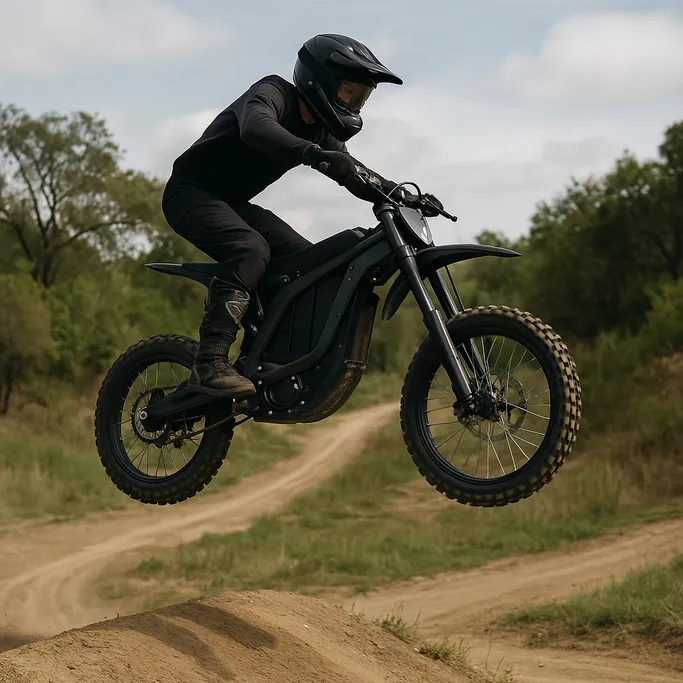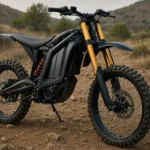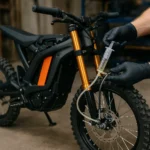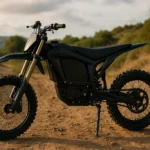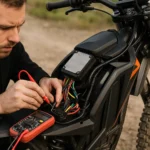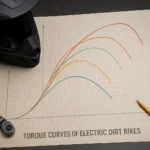Are you wondering how much does an electric dirt bike weigh? You’re not alone — it’s a super common question among new riders, curious parents, and even seasoned trail junkies. And it makes sense: weight isn’t just a number on a spec sheet. It plays a massive role in how the bike handles, how it performs, and whether it’s the right fit for your riding style or your kid’s weekend fun. 💡
When it comes to choosing the right off-road electric bike, weight can mean the difference between easy handling and back-breaking transport. From featherlight kids’ bikes to beefy high-performance monsters, there’s a whole range — and this guide is here to break it all down.
So let’s answer that burning question: how much does an electric dirt bike weigh? Spoiler: it can range from around 40 lbs for entry-level models to over 300 lbs for pro-level beasts. But that number only tells part of the story.
You’ll learn how different weights affect rideability, stability, battery life, and even safety. We’ll also dig into how frame material, battery type, and motor design can increase or decrease the total mass of the bike. And if you’re shopping for a bike for your child, or want something easy to haul in your truck, weight suddenly becomes the most important spec of all.
Already looking into performance? Check out our full breakdown on the fastest electric dirt bikes for top speed comparisons and torque-heavy contenders 🏁
Key Takeaways
- Most electric dirt bikes weigh between 40 lbs and 300+ lbs, depending on category and components.
- If you’re buying for kids, new riders, or urban use, stick with bikes under 130 lbs.
- Heavier e-bikes provide better stability, suspension, and torque for off-road performance.
- Frame type, battery capacity, and motor power all impact the final weight.
- Always compare curb weight vs dry weight when shopping.
⚡ Here’s what you’ll get in this guide: Use the quick links below to jump to the section you need most 👇
Why Weight Matters in an Electric Dirt Bike
Understanding how much does an electric dirt bike weigh isn’t just trivia — it’s essential knowledge if you care about ride quality, safety, and picking the right bike for your needs. Weight affects everything from how a bike handles to how it performs on trails, streets, or backyards. Let’s break down exactly why weight plays such a critical role. ⚙️
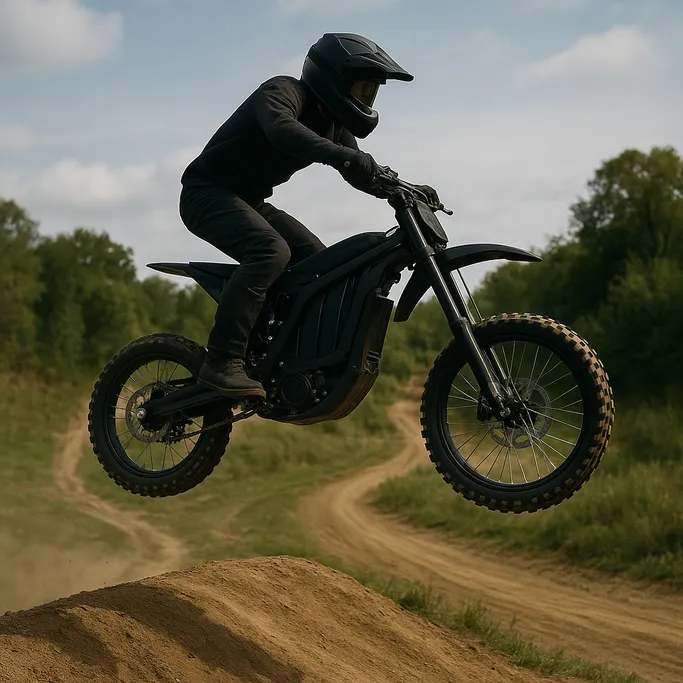
Performance and Handling
Heavier electric dirt bikes often deliver more stability on rough terrain, especially when combined with beefier suspension systems and larger wheels. That added weight keeps the bike grounded when flying over jumps or chewing through muddy trails.
But there’s a tradeoff: lighter bikes are more agile. Riders can flick them around turns, recover from slides quicker, and feel more connected to the ground — especially on twisty forest trails or tight urban riding. If you’re eyeing a bike that can do both speed and tight maneuvering, how much does an electric dirt bike weigh might be the dealbreaker.
Want to see how weight stacks up alongside raw speed? Midway through this guide we’ll explore real bike weights and match them with performance stats — including some absolute rockets like the fastest electric dirt bikes. Stay tuned.
Safety and Comfort
This is where parents really start paying attention. 🛡️ For kids or beginner riders, a heavy e-bike can be a safety hazard. If a rider can’t manage the bike’s weight when stopping or tipping over, that’s a broken wrist waiting to happen.
Lightweight electric dirt bikes are far more forgiving. They’re easier to balance at slow speeds, safer in tip-overs, and simpler to lift if the rider needs to get back up. That’s why many entry-level models keep weight low — usually under 90–100 lbs.
On the flip side, adult riders may find ultralight bikes feel jittery or underpowered. Comfort often comes from weight — especially when cruising over uneven terrain where suspension and body mass work together to absorb impact.
Transport and Storage
Let’s get real — not everyone has a garage with a ramp and winch. If you’re asking how much does an electric dirt bike weigh, chances are you’re also wondering, “Can I lift this thing into my truck?” Or maybe you need to fit it in your van or stash it in the shed.
Bikes under 100–120 lbs are usually manageable for solo lifting, while anything over 200 lbs might require a ramp or second person. Folding frame models or removable battery designs can also shave off a few pounds to make storage easier.
For riders with limited space or frequent travel needs, knowing the exact weight before buying can save a ton of hassle (and your back). 🔧
Average Weights by Category (With Real Examples)
Now that we know why weight matters, let’s answer the big one directly: how much does an electric dirt bike weigh across different types of riders and bikes?
There’s no one-size-fits-all answer. The weight varies a lot depending on whether the bike is built for a kid, a beginner teen, or a fully grown adult tackling hardcore trails. Here’s a breakdown based on real-world models you’ll actually find on the market.
Electric Dirt Bikes for Kids
If you’re shopping for a young rider, weight should be one of your top priorities. Most kids’ electric dirt bikes weigh between 40 lbs and 80 lbs, keeping them light enough for small riders to control — and for parents to toss in the trunk without breaking a sweat.
Example: The Razor MX350 weighs in at just 63 lbs. It’s ideal for children aged 6 to 10, offering enough power for fun but staying well under the danger zone in terms of weight.
Youth and Beginner Electric Bikes
Moving up, bikes in this category weigh anywhere from 85 lbs to 130 lbs. They’re heavier than kiddie bikes but still light enough to maneuver without intimidation. These are the sweet-spot options for teens or adults just getting started with off-road riding.
Example: The Segway X260 comes in at 121 lbs. It’s punchy, but not overwhelming — a great bridge between toy-like bikes and full-size machines.
Full-Size Adult Models
If you’re wondering how much does an electric dirt bike weigh at the pro level, brace yourself. Full-size bikes for experienced riders typically weigh between 150 lbs and 300+ lbs. These beasts are built for power, range, and off-road domination — but you’ll definitely feel the heft.
Example: The Zero FX clocks in at 247 lbs, while the Sur Ron Storm Bee hits around 280 lbs. They’re fast, durable, and ready for hardcore trails… but don’t plan on casually tossing them into a hatchback.
📊 Electric Dirt Bike Weight Comparison Table
| Bike Model | Category | Weight (lbs) | Top Speed (mph) | Best For |
|---|---|---|---|---|
| Razor MX350 | Kids | 63 | 14 | Young children (6–10) |
| Kuberg Start | Kids | 49 | 15 | Very young beginners |
| Segway X260 | Youth/Beginner | 121 | 46 | Teens, entry-level |
| Sur Ron Light Bee X | Mid-Range Adult | 123 | 50 | All-purpose riding |
| Zero FX | Full-Size Adult | 247 | 85 | Experienced riders |
| Sur Ron Storm Bee | Heavy-Duty | 280 | 68 | Hardcore off-roading |
Each of these categories serves a different purpose — and how much does an electric dirt bike weigh will directly affect whether that purpose fits your needs.
Later on, we’ll also cover what makes one bike heavier than another — and how to choose the right weight for your goals.
What Factors Affect the Weight?
By now you’ve seen that how much does an electric dirt bike weigh can vary a lot. But what actually makes one bike heavier than another? It’s not just random — there are key components that add pounds (or shave them off). Let’s break down the top weight influencers so you know exactly what to look for when comparing bikes.
Battery Type and Size
The battery is often the heaviest component on an electric dirt bike. Bigger batteries mean more range and longer rides, but they also pack on the weight.
- Lithium-ion batteries are the gold standard — they’re lighter, more efficient, and longer-lasting.
- Lead-acid batteries are cheaper, but significantly heavier and bulkier.
If you’re aiming for lower weight and better handling, go for a lithium setup. But if you’re looking to save a few bucks and don’t mind the extra bulk, lead-acid might still be worth considering.
Frame Material
Ever heard the saying “built like a tank”? Yeah, that applies here. The frame material directly affects how much an electric dirt bike weighs.
- Aluminum frames strike a solid balance between light weight and durability.
- Steel frames are stronger but heavier — better for hard riders who need ruggedness.
- Carbon fiber? Ultra-light but crazy expensive. Rare in dirt bikes but slowly making appearances.
The frame choice can swing the scale by 20–40 lbs, so if every pound matters (say, for kids or riders with limited storage), this is a huge spec to check.
Motor Power and Components
Big motor = big weight. That’s just how it goes.
High-torque motors, which are great for hills and aggressive trails, often come with larger housings and cooling components. Add in hefty suspension systems, disc brakes, thick tires, and beefy drivetrains, and you’ve suddenly jumped a few dozen pounds.
But hey — that extra weight brings performance. You’re trading ounces for off-road dominance.
Bonus Weight Culprits
- Wheel size: Larger wheels = more metal and rubber.
- Suspension travel: More travel often means larger forks and shocks.
- Accessories: Racks, guards, displays, lights, and even kickstands can slowly add up.
So when someone asks, how much does an electric dirt bike weigh, you can confidently say: it depends — but here’s what really adds the bulk. 🔍
If you’re reading this far, you’re clearly serious about choosing the right ride. Before you go, make sure to bookmark our no-nonsense breakdown of the fastest electric dirt bikes — it pairs perfectly with this guide for anyone chasing both speed and smarts.
Is a Lighter Electric Dirt Bike Always Better?
It’s tempting to think that lighter = better. And yeah, when you’re lifting it into your truck or helping your kid get upright after a spill, less weight is a big win. But before you assume that lighter electric dirt bikes are always the way to go, let’s dig into the real-world pros and cons.
Pros of Lighter Bikes
Let’s be real — lightweight bikes are just easier to deal with. 💨
- Easier to maneuver: Especially in tight trails, city riding, or when learning.
- Better for kids and beginners: Less risk of injury if they fall or tip over.
- Simple transport and storage: Toss it in the back of a hatchback, lift it onto a rack, or carry it up a few steps.
For riders who prioritize convenience, learning, or shorter distances, knowing how much does an electric dirt bike weigh can lead you to the perfect featherweight champion.
Downsides of Going Too Light
Now for the flip side — being too light can backfire if you’re not careful. 🛑
- Less stability: Especially at high speeds or on uneven terrain, a super light bike can feel twitchy or even unsafe.
- Weaker suspension and power: Lighter bikes often mean compromises in motor size and shock absorption.
- Limited off-road capability: You need some heft to power through rocks, ruts, and muddy climbs.
So no — lighter isn’t always better. The right weight depends on what you’re using the bike for. A kid learning in the backyard? Keep it light. An adult bombing forest trails? You’ll want some muscle.
Still wondering how much does an electric dirt bike weigh for your specific ride goals? Keep going — the next section will help you lock in the ideal range based on your style and needs. And don’t forget to revisit our ultimate guide to the fastest electric dirt bikes to see how weight affects speed, too.
Choosing the Right Weight for Your Needs
So you’re still wondering how much does an electric dirt bike weigh — but now with a specific goal in mind. Great. Let’s match weight ranges to rider types and real-life use cases. Because picking the wrong weight can wreck your ride experience before you even twist the throttle.
For Kids and Young Riders
If the bike is for a child or smaller teen, your #1 concern is control and safety. Stick with bikes that weigh under 100 lbs.
- They’re easier to balance and pick up.
- A fall won’t be nearly as punishing.
- Lower mass means less momentum = safer stopping and turns.
Examples like the Razor MX350 or Kuberg Start fall into this category — ideal for riders aged 5–12.
For Commuting and Easy Storage
Need a bike you can throw in a van or carry up steps? Portability is king here. Aim for a model between 90–130 lbs.
- Light enough to load solo.
- Small footprint for garages, sheds, or apartment hallways.
- Often come with removable batteries to reduce lift weight.
This range is great for urban riders or RV users who need something practical but still fun off-road.
For Off-Road and High-Speed Riders
Looking to hit gnarly trails, climb steep hills, or reach high speeds? You’ll need something sturdier — expect weights in the 150–300+ lbs range.
- Better suspension.
- Bigger motors = more torque.
- Built for abuse, not just play.
Yes, they’re heavier — but that’s the price of performance. For aggressive trail riders or adults who want maximum thrill, a heavier bike is 100% worth it.
No matter your riding style, knowing how much does an electric dirt bike weigh helps narrow down your options and avoid nasty surprises. Choose smart, ride happy. ⚡
Expert Tip: How to Weigh a Bike Accurately
You’d think checking how much does an electric dirt bike weigh would be as simple as reading a spec sheet, right? Not quite. Manufacturers often list dry weight — which excludes the battery, fluids, or optional components — making the real weight quite a bit higher.
Here’s how to get the true number.
Use a Digital Scale
The easiest and most accurate method is a platform scale. Just roll the bike onto it and get the full reading — battery and all.
If you don’t have access to one:
- Weigh yourself.
- Then weigh yourself holding the bike.
- Subtract your weight to get the bike’s.
It’s not perfect, but it gets close enough for most riders.
Check the Owner’s Manual or Manufacturer Site
If the scale’s not an option, dig into the manual or the manufacturer’s website. Look for “curb weight” or “wet weight”, not just “dry weight.” Curb weight includes everything — battery, tires, fluids, and sometimes accessories.
Keep in mind: when asking how much does an electric dirt bike weigh, always clarify which version of weight you’re looking at. Because lifting a 100 lb dry bike might feel a lot different once that battery’s back in place.
Pro Tip: Remove the Battery Before Transport
If weight is an issue while lifting or storing the bike, just remove the battery. It can instantly drop 15–30 lbs depending on the model. That alone could save your back (and your bumper) the next time you load up.
Now that you know how to get the real numbers, you’re ready to compare electric dirt bikes like a pro — no surprises, no guesswork.
Real FAQs (People Also Ask)
Still got questions? You’re not alone. These are the most common things riders ask when trying to figure out how much does an electric dirt bike weigh. We’re cutting through the fluff — fast answers, no filler. 💬
What is the lightest electric dirt bike?
Right now, some of the lightest electric dirt bikes weigh around 45–50 lbs, like the Kuberg Start. These ultra-light bikes are designed specifically for toddlers and very young beginners, with just enough power for safe fun.
How much does a Sur Ron bike weigh?
The Sur Ron Light Bee X weighs roughly 123 lbs, battery included. Meanwhile, the Sur Ron Storm Bee is much heavier, clocking in at about 280 lbs — built for hardcore off-road use with serious torque and full suspension.
According to Electrek, the Sur Ron’s aluminum frame design clocks in at around 110 lbs – backing up typical weight ranges for mid-sized adult e-bikes.
Are electric dirt bikes heavier than gas ones?
Not necessarily. In many cases, electric dirt bikes are actually lighter than their gas counterparts, especially when you factor in that they don’t have engines, exhausts, or fuel tanks. However, large batteries and steel frames can level the playing field.
What weight is good for a beginner?
If you’re new to riding, stick with bikes that weigh under 130 lbs. It’s enough to feel stable, but light enough that you won’t struggle to control it. Anything heavier might feel overwhelming until you build up confidence and strength.
Does bike weight affect battery life?
Yes — a heavier bike generally draws more power, especially during acceleration and hill climbs. That means shorter battery range. If you care about long rides, you’ll want a good balance between battery size and overall weight.
These quick answers should clear up the most common doubts, but if you’re still asking yourself how much does an electric dirt bike weigh for your specific needs, the best bet is to match weight to rider size, experience level, and how you plan to use it.
Bonus Resource: What Else to Consider Beyond Weight
By now, you’ve got a solid grip on how much does an electric dirt bike weigh — but weight is just one piece of the puzzle. If you’re serious about choosing the right e-dirt bike, here are a few other things you’ll want to factor in before pulling the trigger. 🎯
Power-to-Weight Ratio
This is a huge one. A lighter bike with low power might still feel sluggish, while a slightly heavier bike with a powerful motor can absolutely rip. The power-to-weight ratio tells you how much go you’re getting for each pound of bike — and it can make or break your riding experience.
If speed and acceleration matter to you, don’t just focus on weight. Look at how much torque and top speed the bike delivers relative to its weight.
Seat Height and Ergonomics
A bike might be lightweight, but if the seat’s too high or the frame geometry feels awkward, you won’t be confident riding it. Make sure you can:
- Flat-foot or at least toe-touch the ground
- Reach the handlebars without strain
- Easily manage the bike’s weight when leaning or turning
Ergonomics matter as much as pounds on the scale.
Battery Range and Charging Time
A lighter bike might have a smaller battery — which means less range. Always compare estimated mileage and charging times when shopping. If you’re hitting trails or commuting, nothing’s worse than running out of juice halfway through a ride.
Durability vs Weight Tradeoff
In some cases, a heavier bike is actually a good thing — it usually means stronger frames, tougher components, and better resistance to abuse. If you’re riding hard or often, don’t let a few extra pounds scare you off.
The real goal isn’t the lightest bike — it’s the right bike. One that matches your body, skill level, and where you’ll be riding.
Keep this in mind the next time someone throws out the question how much does an electric dirt bike weigh. Because the answer isn’t just a number — it’s about what that number actually means for you.
Ready to Weigh In? Share Your Thoughts and Join the Ride!
Alright, rider — now that you’ve got the full breakdown on how much does an electric dirt bike weigh, it’s your turn to jump into the conversation. 💬
Have you ridden a featherweight flyer or a full-blown beast? Which one felt better for your style — light and nimble or heavy and powerful? Drop your experience in the comments below and help out the next rider trying to make a smart choice.
And hey — if this guide saved you time, stress, or a sore back, share it with your fellow riders! 📲 Whether they’re parents shopping for their kid’s first dirt bike or adrenaline junkies hunting for the perfect trail machine, everyone could use a little help choosing the right weight.
Stay dirty, ride smart, and we’ll catch you in the next guide. ⚡️

Tyler Brooks is the storyteller behind most of the content at Electric Dirt Zone. With over 10 years of experience in digital media and a lifelong love for off-road riding, he blends technical insight from the team with engaging, down-to-earth writing. When he’s not turning dusty trail rides into blog posts, you’ll probably find him snapping pics before things get too wild.

